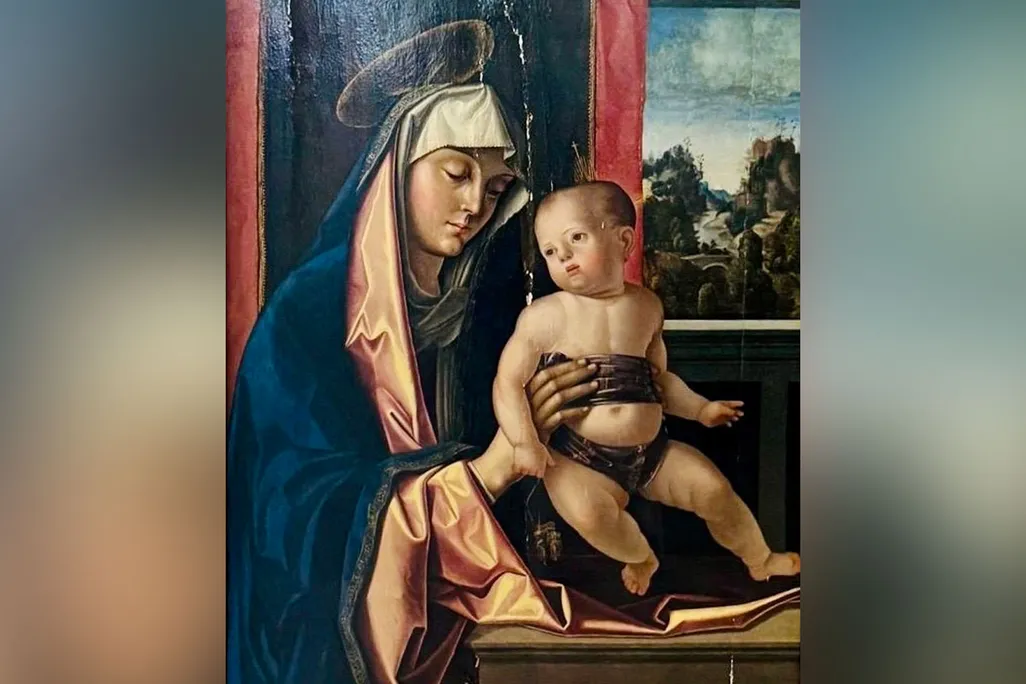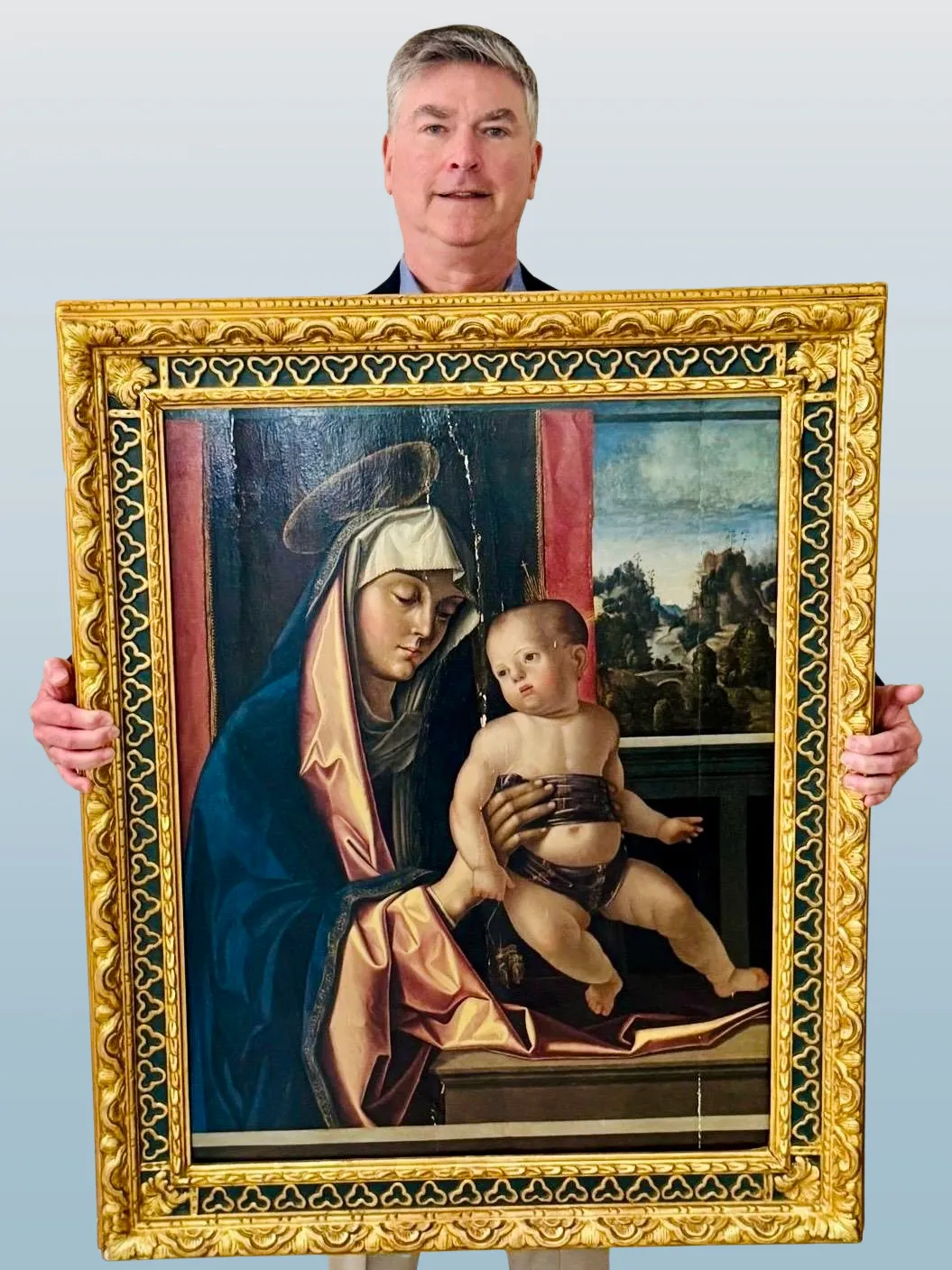This Woman Didn’t Want to Return a Stolen 16th-Century Painting. Then She Changed Her Mind
Despite her legal claim to ownership, Barbara de Dozsa has decided to return an artwork by Italian artist Antonio Solario that vanished more than 50 years ago

A woman in Norfolk, England, has at last decided to return a 16th-century painting that was stolen more than 50 years ago.
The Madonna and Child painting disappeared from Italy’s Civic Museum of Belluno in 1973. Since then, it’s been included on the most-wanted lists of numerous police forces, according to the Guardian’s Dalya Alberge.
In March, the painting made headlines when it resurfaced in the possession of a Norfolk woman named Barbara de Dozsa. At the time, de Dozsa refused to return the painting, arguing that her deceased ex-husband, Baron de Dozsa, bought the work in good faith in 1973, shortly after the robbery.
Now, “after years of soul-searching and persuading by an art lawyer,” de Dozsa has agreed to return the painting to its owner, as the Guardian reports.
The Madonna and Child was painted by Antonio Solario, an Italian artist also known by his nickname, Lo Zingaro (the Gypsy). According to Artnet’s Jo Lawson-Tancred, the Belluno museum acquired it in 1872, and it was one of several works that were stolen a century later in a major heist.
Quick fact: Who is Antonio Solario?
Born in the late 15th century, the artist likely worked in east-central Italy and may have also traveled to England.
Some of those paintings were recovered in Austria, which is where de Dozsa’s husband bought the Solario from an unnamed source.
Authorities were unable to locate the painting until 2017, when Barbara de Dozsa tried to sell it through an auction house, and experts linked to the Belluno museum came across it. The sale did not go through as planned, and Italian authorities failed to provide sufficient documentation to counter de Dozsa’s claim to the painting—partly due to pandemic-related disruptions.
In 2020, British police returned the painting to de Dozsa, who was protected under the United Kingdom’s Limitations Act of 1980, which legalizes ownership of stolen goods after six years if their purchase was “unconnected to the theft.”
Why did de Dozsa change her mind? She appears to have been convinced in part by Christopher Marinello, a lawyer who specializes in recovering stolen art. The founder of Art Recovery International, Marinello had been working on this particular case pro bono.
“It’s a beautiful Madonna and Child, it’s a beautiful small museum in a wonderful town, and the people are proud of it,” Marinello tells Artnet. “A theft is a horrible thing, especially for a museum that is supposed to protect cultural heritage for its citizens and future generations. It’s a real violation.”

The lawyer was partly motivated by his own roots in Italy’s Veneto region, which includes Belluno. He first made contact with de Dozsa a year ago and tried to convince her that she had a moral obligation to return the artwork.
“While the U.K. Limitations Act certainly supported her position, the fact that the painting was listed on the Interpol and Carabinieri stolen art databases meant that the painting could never be sold, exhibited or even transported without the risk of being seized,” says Marinello in a statement from Art Recovery International.
Eventually, de Dozsa agreed to return the painting unconditionally to Belluno’s Civic Museum.
“When it comes to returning stolen art and doing the right thing, I can be annoyingly persistent,” Marinello adds. “But ultimately, it was Barbara de Dozsa’s decision to make, and she chose wisely. Her kindness has restored my faith in people who unknowingly come into possession of stolen or looted works of art.”
Other works stolen in the same heist are still missing from Belluno. Having the Solario work back means a great deal to the region, according to Oscar de Pellegrin, the mayor of Belluno.
“Returning this painting to the city means giving back a fragment of its identity, its history and its soul,” de Pellegrin tells the Guardian.